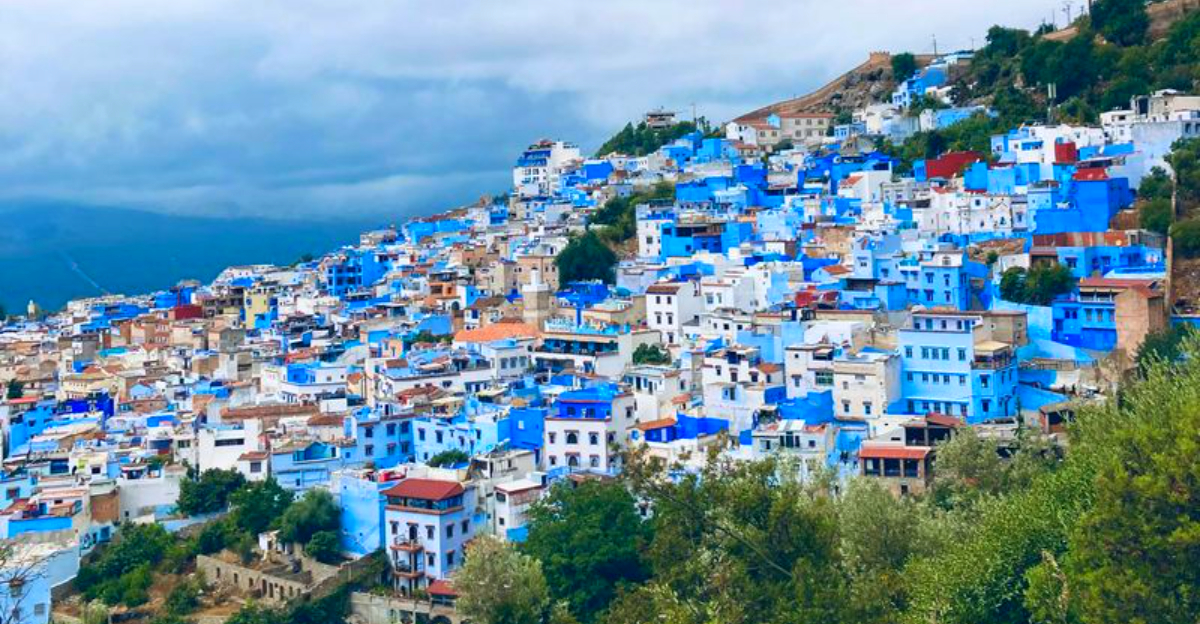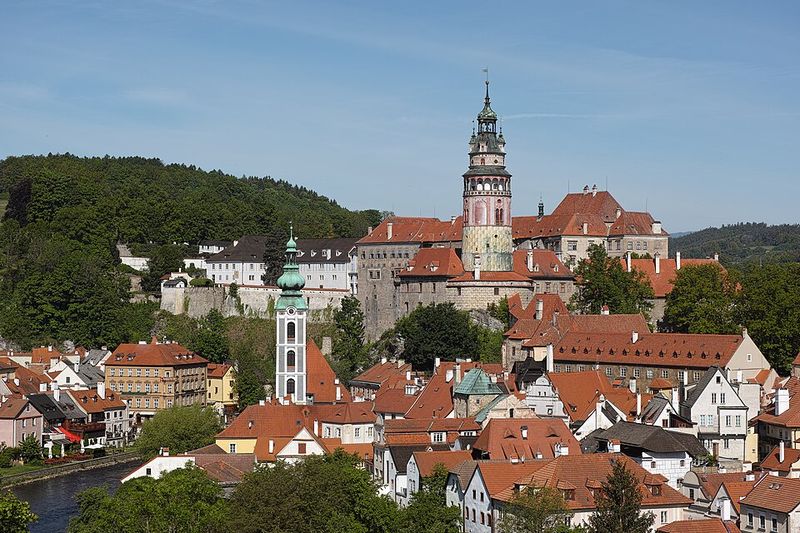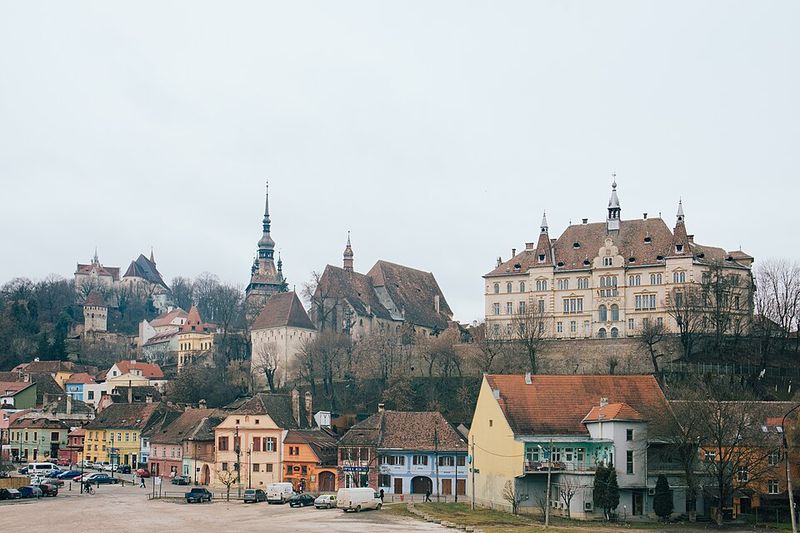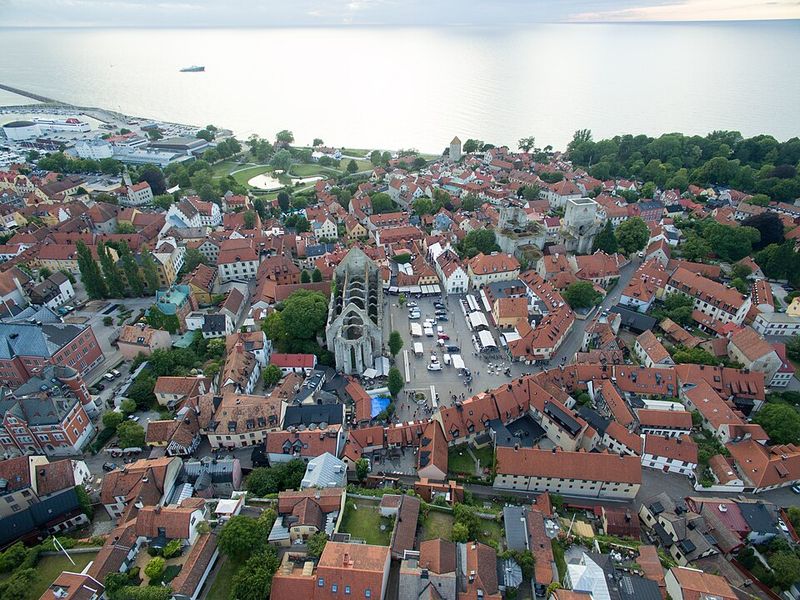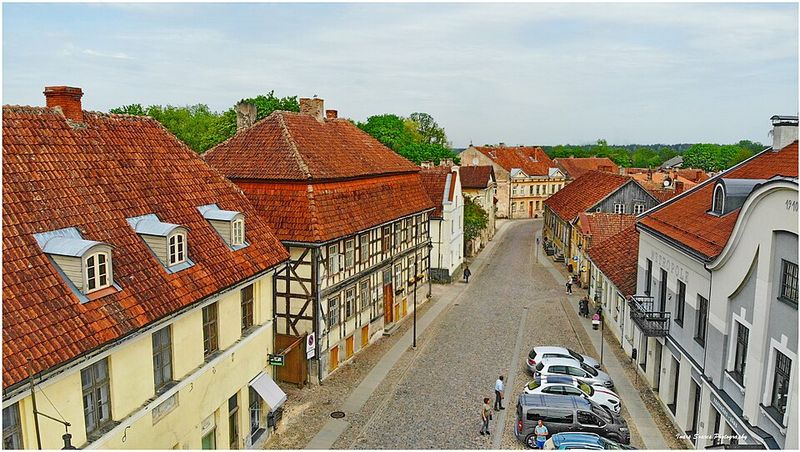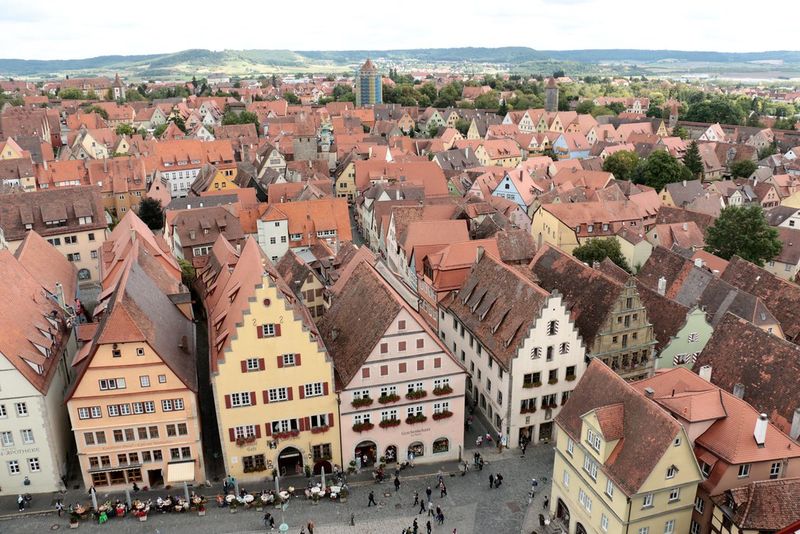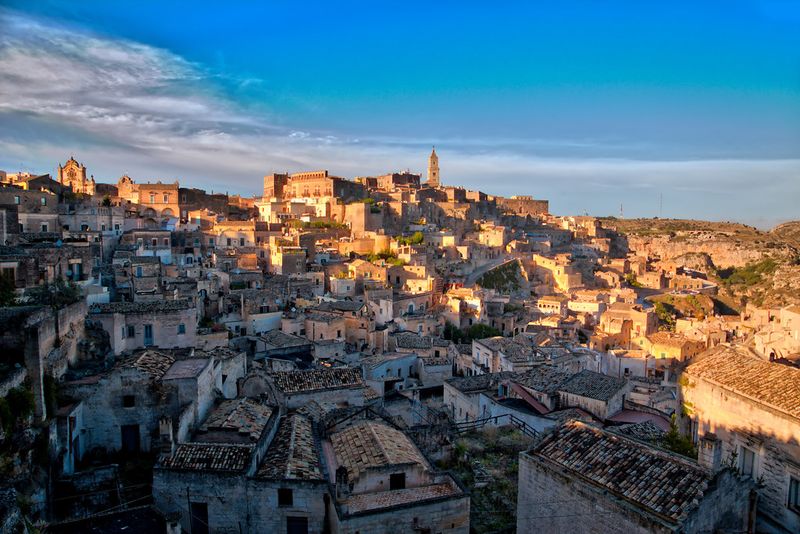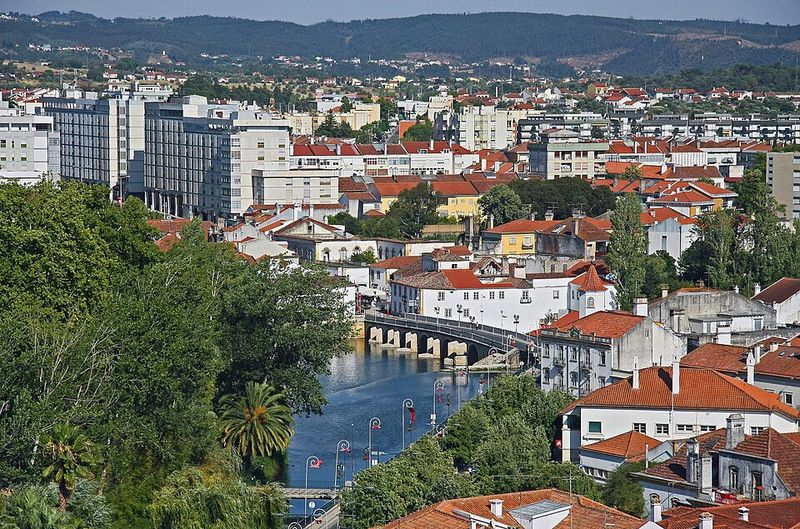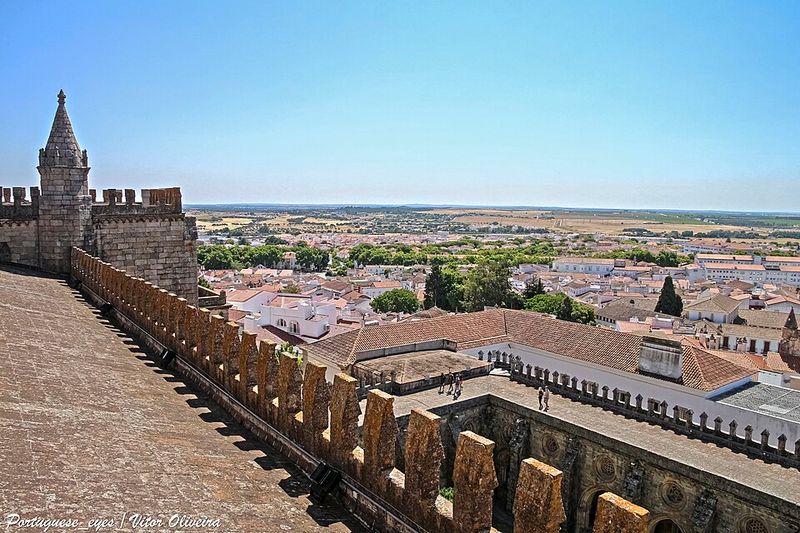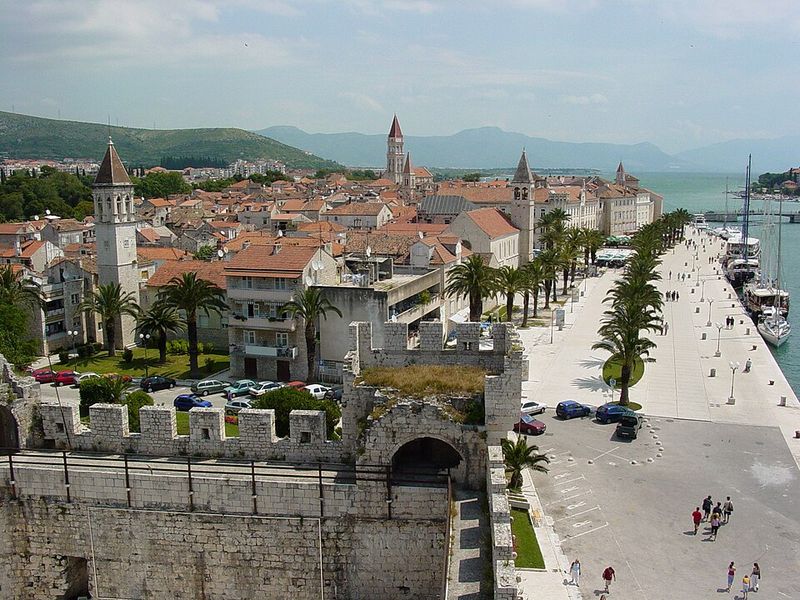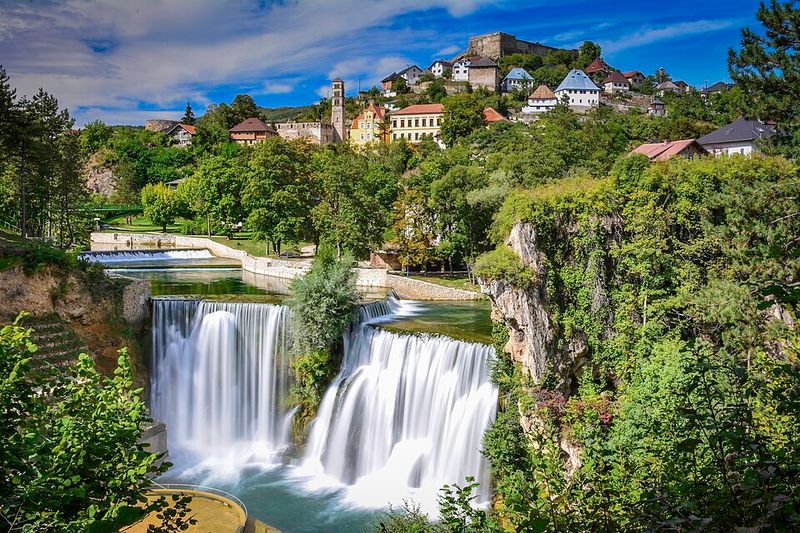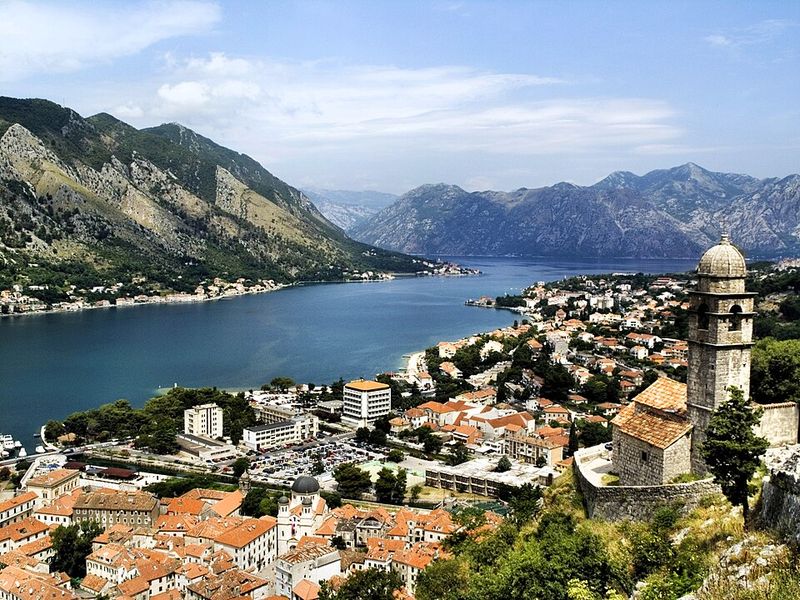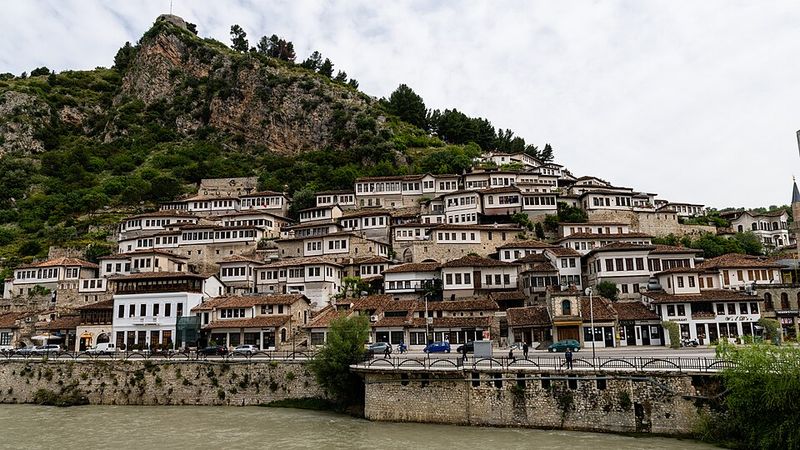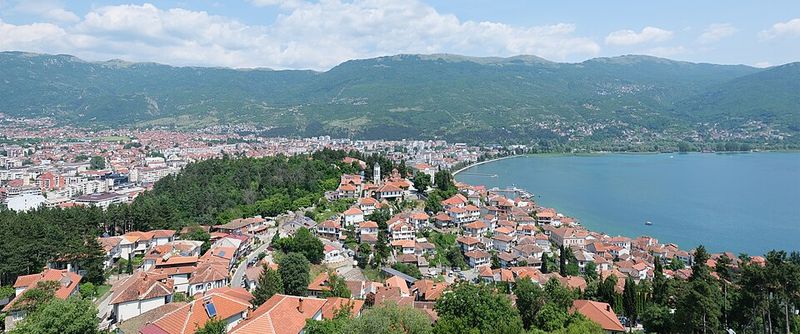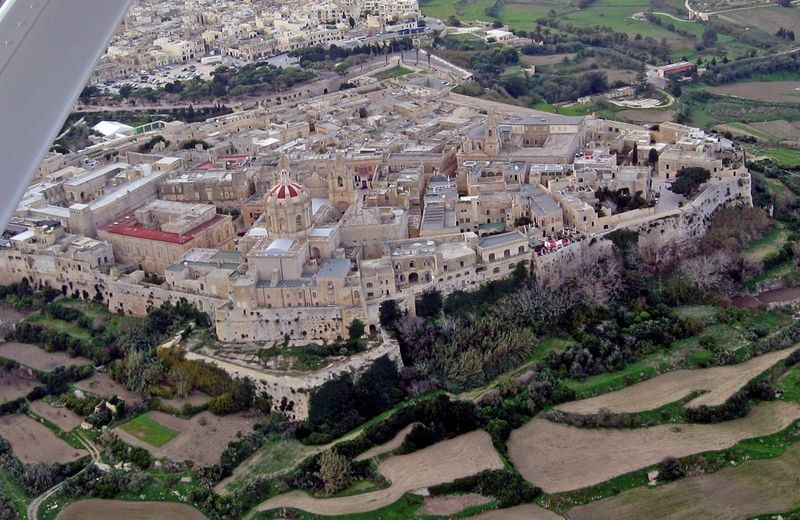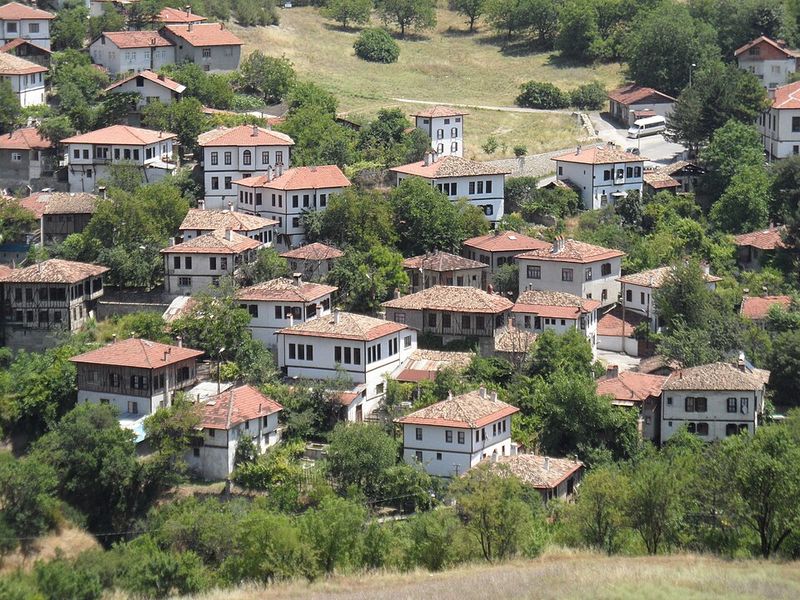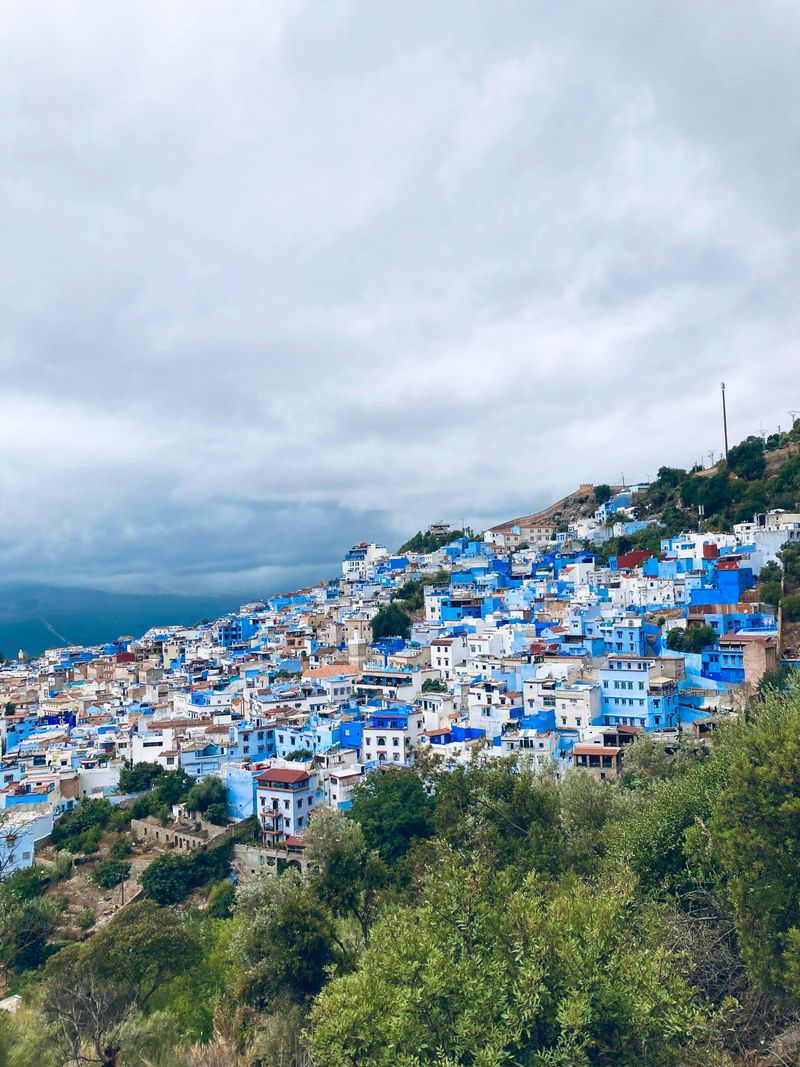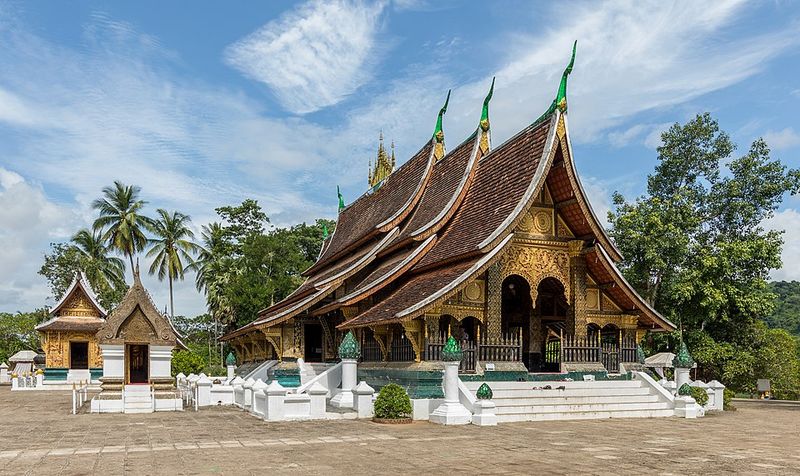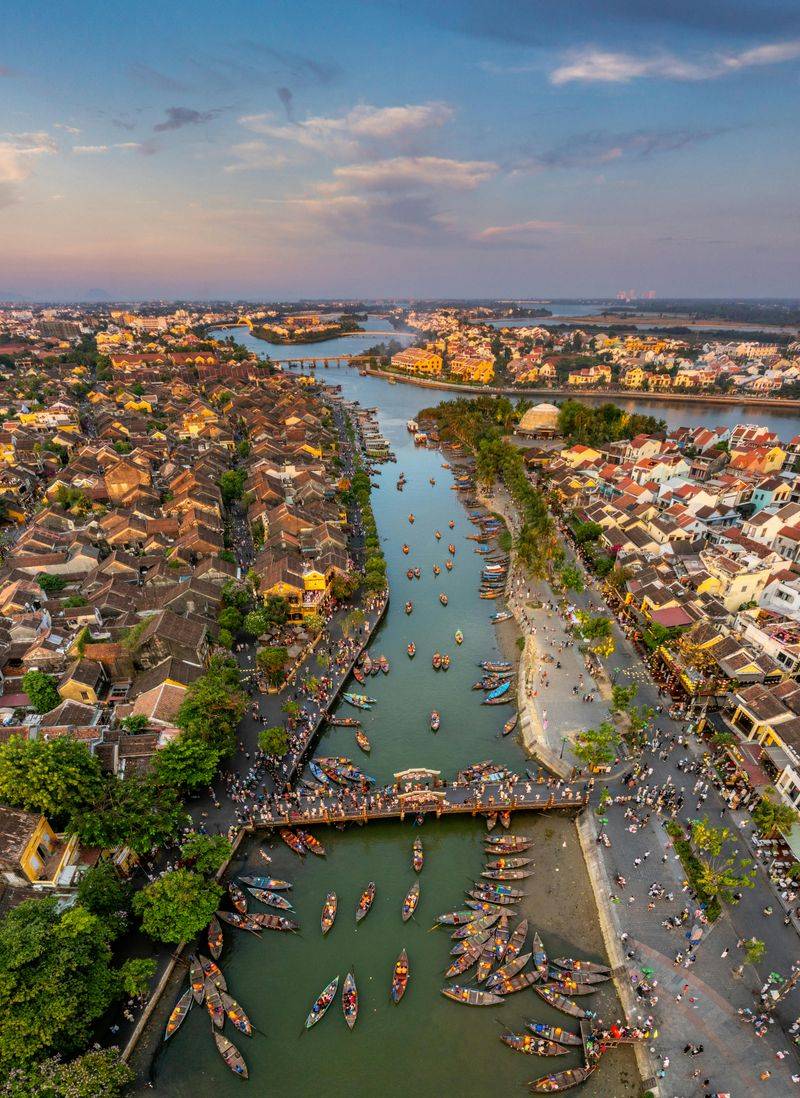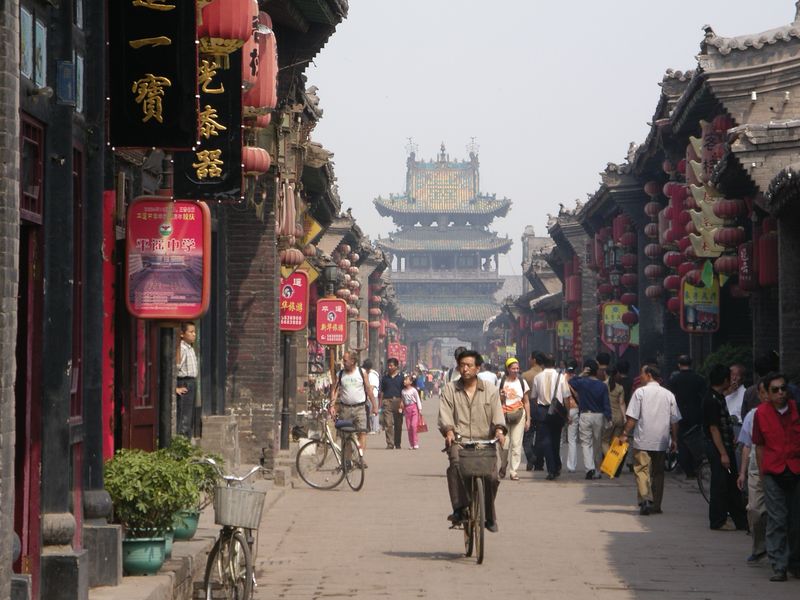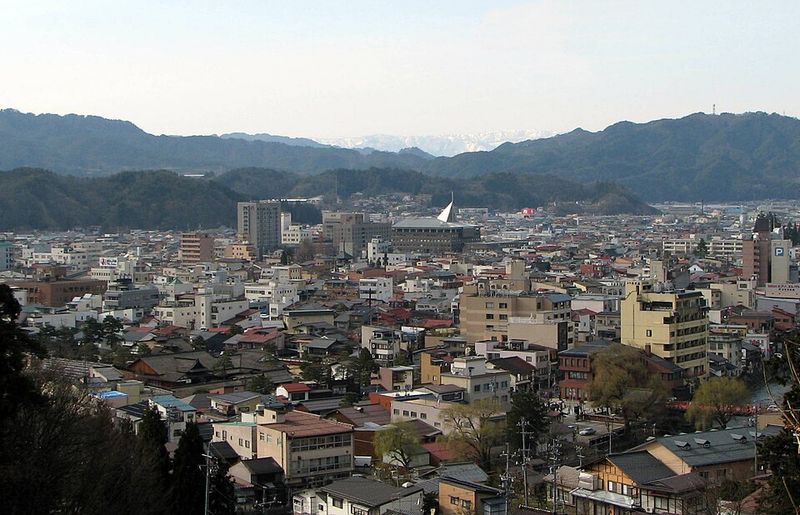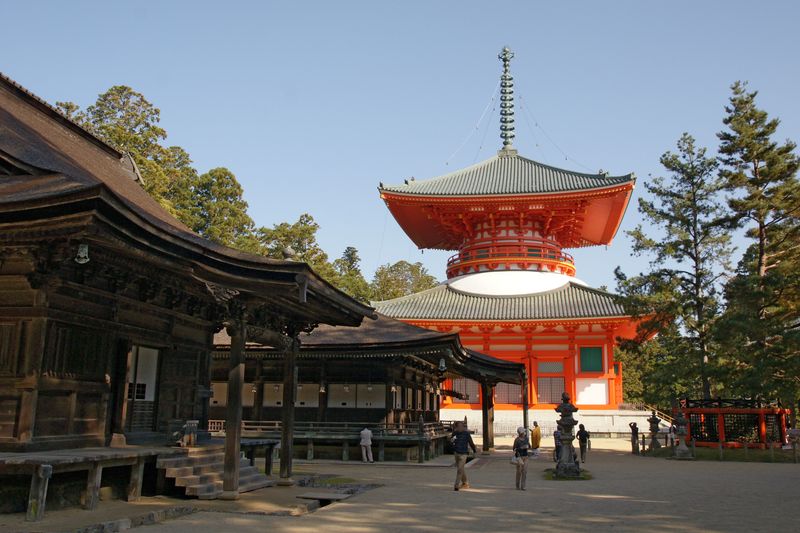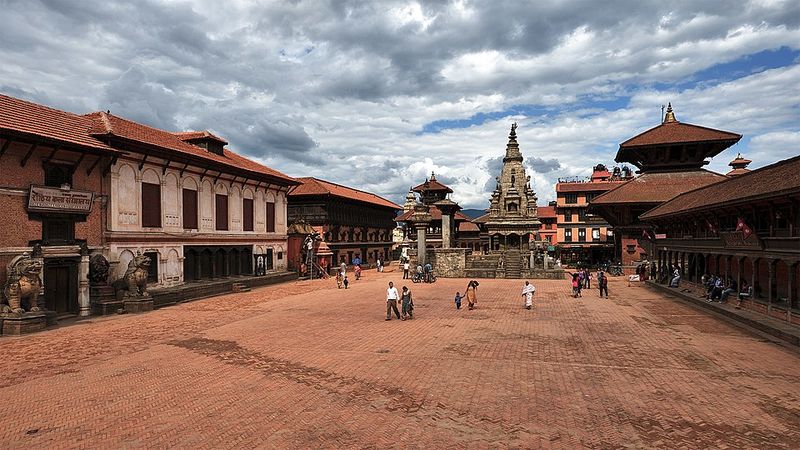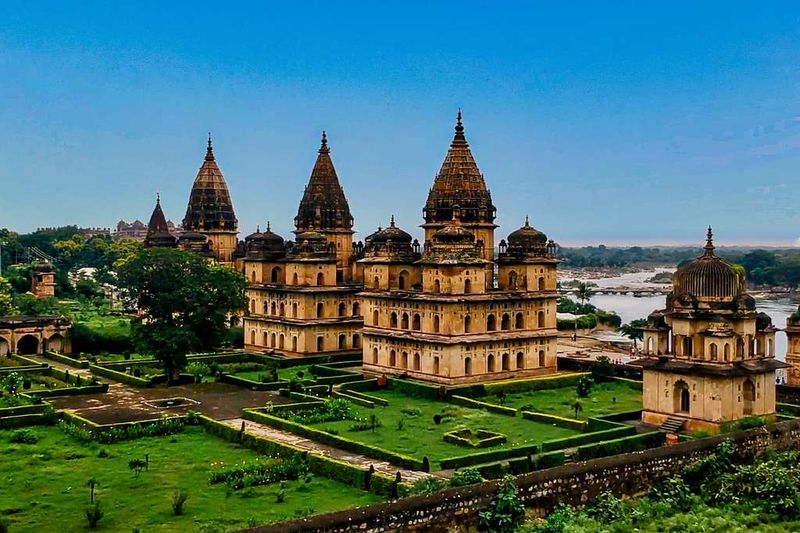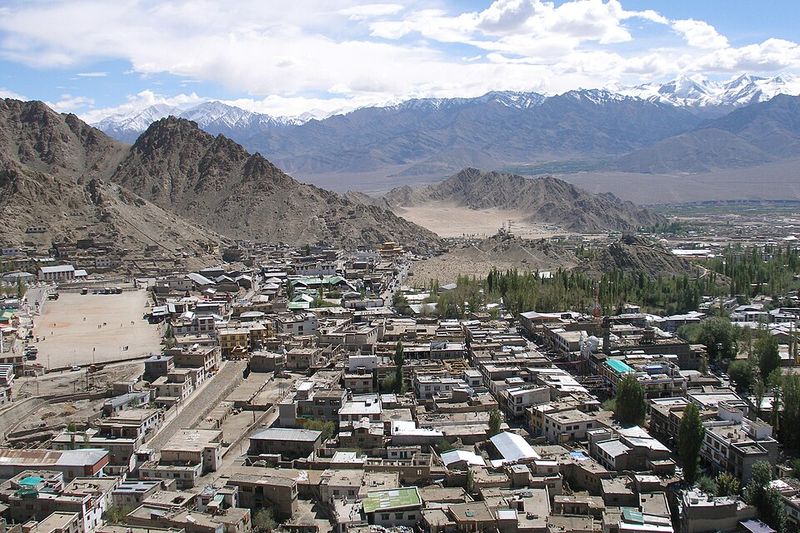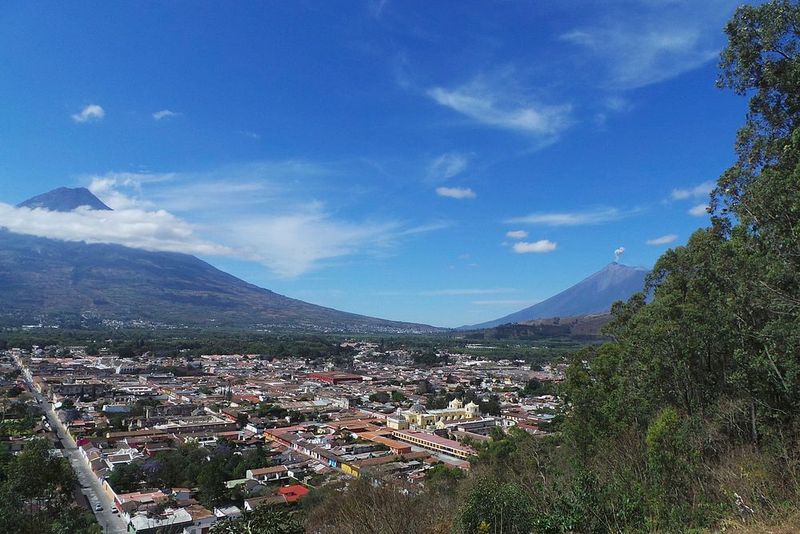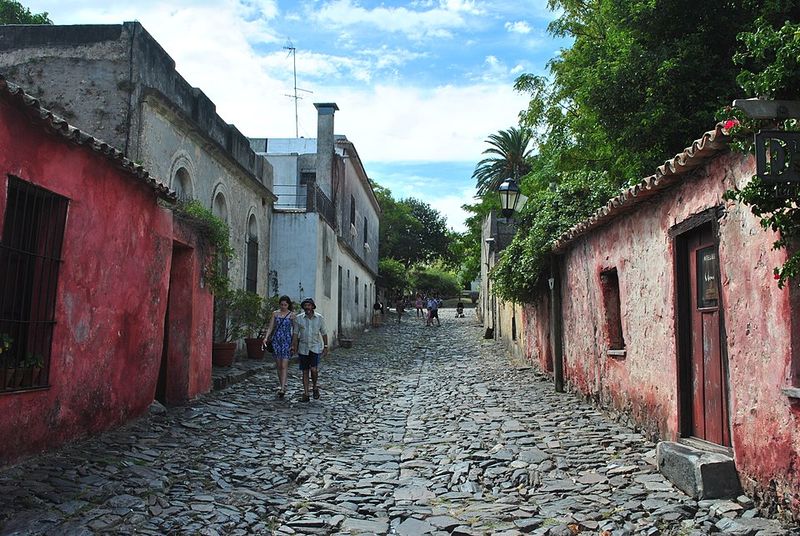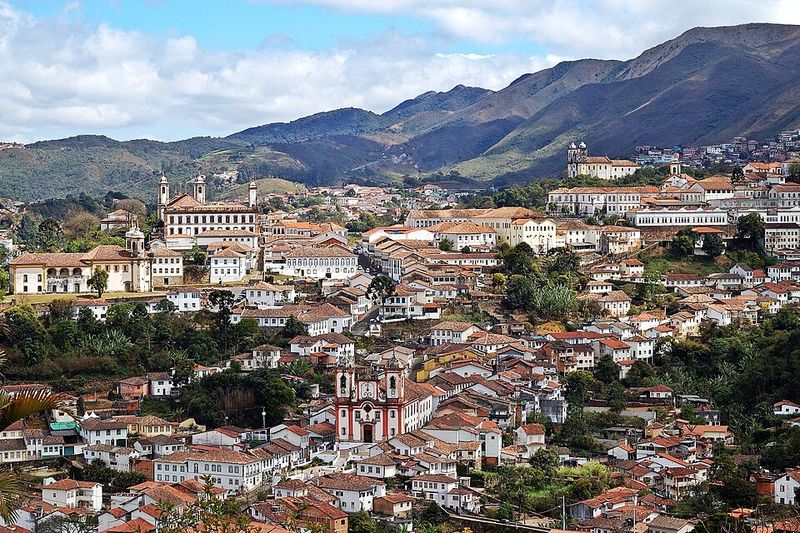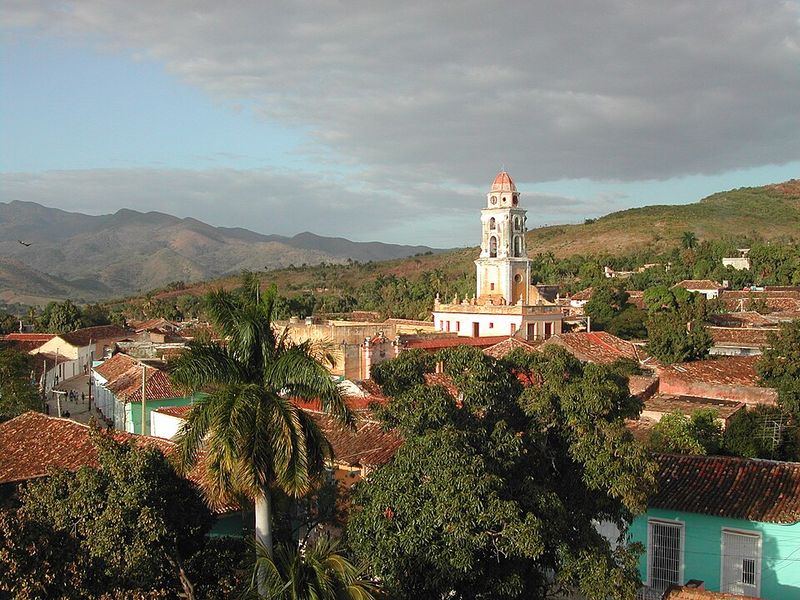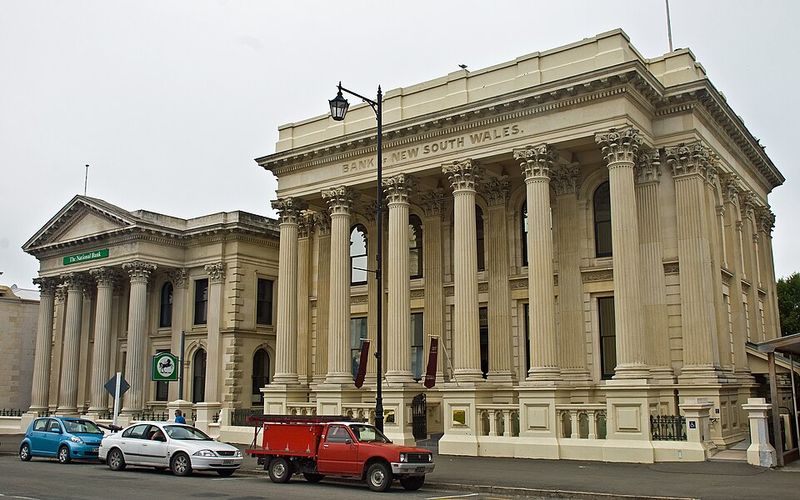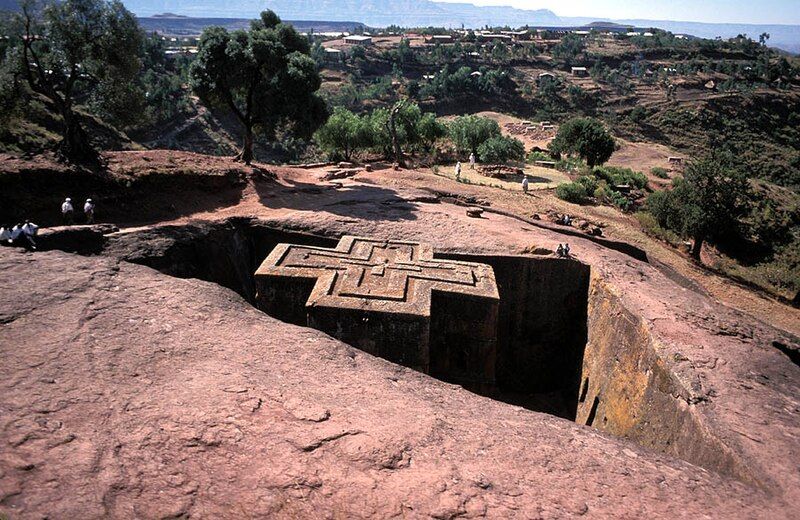Some of the world’s most captivating stories hide in places you can walk across in an afternoon. While millions flock to mega-cities, a handful of small historic towns preserve centuries-old architecture, traditions, and ways of life that larger destinations have long since paved over. These thirty gems, from medieval European citadels to colonial Latin American plazas and ancient Asian temple towns, prove that history feels most alive when you can still hear your footsteps echo on cobblestones laid hundreds of years ago.
1. Český Krumlov, Czechia
Stepping into Český Krumlov feels like flipping open a pop-up storybook where every tower, bridge, and alley has been preserved in three dimensions. The Vltava River loops around the old town in a near-perfect horseshoe, cradling Gothic and Renaissance facades that have barely changed since the 1300s.
Above it all looms a sprawling castle complex—second only to Prague’s—complete with a Baroque theatre still lit by candles. With fewer than thirteen thousand residents, the entire place hums at a human scale; you can cross the core in twenty minutes yet spend days discovering frescoed courtyards and riverside beer gardens.
UNESCO recognized it in 1992, and overtourism debates simmer every summer, but visit in shoulder season and you’ll have lamplit lanes nearly to yourself.
2. Sighișoara, Romania
Vlad Dracula—yes, that Vlad—was born inside Sighișoara’s citadel walls in 1431, and the house still stands, now a restaurant with Gothic ambiance cranked to eleven. But the real star is the Clock Tower, a seventy-meter sentinel that has kept time over this Saxon stronghold since the fourteenth century.
Pastel-painted burghers’ homes lean into steep, cobbled lanes, and nine surviving towers recall the guilds—tanners, tailors, butchers—that once defended each bastion. UNESCO inscribed the ensemble in 1999, calling it Europe’s best-preserved inhabited medieval citadel.
Around twenty-four thousand people live here today, blending modern Romanian life with centuries-old German architecture. Climb the covered wooden staircase to the hilltop church for rooftop views that haven’t changed much since Vlad’s day.
3. Visby, Sweden
In the Middle Ages, Visby ruled Baltic trade as the jewel of the Hanseatic League, and its three-kilometer ring wall—studded with forty-four towers—still encircles the old town like a stone necklace. Inside, seventeen medieval churches (most now picturesque ruins) poke above red-roofed wooden houses and rose-draped lanes.
The population hovers around twenty-four thousand, but every August the island of Gotland swells with festival-goers who turn back the clock during Medieval Week, complete with jousting and mead. UNESCO honored the site in 1995 for being Northern Europe’s best-preserved fortified commercial city.
Ferries from the mainland take about three hours, and once you arrive the pace slows to a thirteenth-century amble. Sunset walks along the ramparts, with the Baltic glinting below, are mandatory.
4. Kuldīga, Latvia
Europe’s widest waterfall—the Venta Rapid—rumbles right through the heart of Kuldīga, a town so well preserved that UNESCO added it to the World Heritage list only in 2023. During the Duchy of Courland’s heyday (sixteenth to eighteenth centuries), this was a bustling craft and trade hub; today, around thirteen and a half thousand residents keep that legacy alive in timber houses and redbrick warehouses.
The old brick bridge (Europe’s longest of its type when built) arches over the Aleksupīte gorge, and come spring you might spot salmon leaping the falls—a sight locals have watched for generations. Cobbled Market Square, pastel facades, and a skyline punctuated by church spires make every corner Instagram-ready without feeling contrived.
It’s refreshingly uncrowded compared to Baltic neighbors.
5. Rothenburg ob der Tauber, Germany
Rothenburg’s walls wrap the town so completely that you can walk the entire wooden rampart—two and a half kilometers—without ever touching modern pavement. Half-timbered houses in sherbet shades lean over cobbled lanes, and the Plönlein fork (a tiny triangular plaza with twin towers) has launched a thousand postcards.
Miraculously, Allied forces paused their 1945 bombardment after a local general invoked the town’s beauty, sparing much of the medieval core. Today it’s a small Bavarian gem where Christmas shops stay open year-round and the Night Watchman still leads evening tours by lantern light.
Critics call it too touristy, and day-trippers do flood in from Munich and Nuremberg, but spend the night and you’ll have dawn-lit alleys almost to yourself. The town’s fairy-tale perfection is no accident—it’s been carefully preserved for over a century.
6. Matera, Italy
Humans have carved homes into Matera’s limestone ravines for at least nine thousand years, making the Sassi districts among the planet’s oldest continuously inhabited urban landscapes. Until the 1950s families and livestock shared these cave-rooms, and the Italian government relocated thousands to modern housing, leaving the Sassi nearly abandoned.
Then artists, hoteliers, and preservationists moved in. UNESCO inscribed the site in 1993, and today boutique cave-hotels, restaurants, and galleries fill the honeycombed cliffs.
Walking the Sassi at dusk—when golden light pools in ancient courtyards and church bells echo off tufa walls—feels like stepping onto another planet. Matera served as the backdrop for Mel Gibson’s *Passion of the Christ* and the latest James Bond film, yet it remains remarkably livable. Locals still hang laundry between stone arches, blending millennia-old architecture with twenty-first-century life.
7. Tomar, Portugal
When the Knights Templar were dissolved across Europe in 1312, Portugal simply rebranded them as the Order of Christ and handed them Tomar as headquarters. The result is the Convent of Christ, a UNESCO fortress-monastery where Romanesque, Gothic, Manueline, and Renaissance styles stack like geological layers.
The Charola—a sixteen-sided Templar church—sits at the heart, its design echoing Jerusalem’s Church of the Holy Sepulchre. Outside, the famous Manueline window explodes with maritime motifs: ropes, coral, seaweed carved in stone to celebrate Portugal’s Age of Discovery.
Tomar itself keeps a small-city vibe, with whitewashed houses, riverside parks, and a relaxed pace that feels worlds away from Lisbon’s hustle. Every four years the Tabuleiros Festival fills streets with hundred-pound bread-and-flower towers carried by local girls—a tradition half a millennium old.
8. Évora, Portugal
A Roman temple with fourteen Corinthian columns stands smack in the middle of Évora’s old town, a two-thousand-year-old reminder that this place has been a crossroads since the empire’s heyday. Medieval walls girdle the UNESCO-listed core, inside which you’ll find a Gothic cathedral, a Renaissance university, and the macabre Chapel of Bones (lined with five thousand skulls and the motto “We bones here wait for yours”).
Around fifty-four thousand people call Évora home, giving it a lived-in warmth that pure museum-towns lack. Narrow lanes open onto sun-baked plazas where locals sip *ginjinha* (cherry liqueur) and debate football under orange trees.
It’s the capital of Portugal’s Alentejo region, famous for cork forests, wine, and some of the country’s best traditional cooking. Stay for sunset when the white-and-yellow houses glow like embers.
9. Trogir, Croatia
Trogir sits on a tiny island—just five hundred meters across—connected to the mainland and Čiovo Island by bridges, and every square meter is crammed with Venetian stonework. The cathedral’s Radovan Portal, carved in 1240, is a masterpiece of Romanesque sculpture, and the bell tower offers Adriatic views that justify the climb.
UNESCO called it “the most intact Romanesque-Gothic complex in Central Europe” when it inscribed the town in 1997. With only about twelve thousand residents in the municipality, Trogir feels intimate; you can cross the old core in ten minutes, yet spend hours getting lost in vaulted passageways and marble-paved piazzas.
Cafés spill onto the harborfront where wooden fishing boats bob beside mega-yachts. Split airport is nearby, making Trogir an easy first or last stop on a Dalmatian coast itinerary—but it deserves more than a layover.
10. Jajce, Bosnia & Herzegovina
A twenty-two-meter waterfall thunders through the middle of Jajce, crashing where the Pliva River meets the Vrbas—a natural spectacle that would be the main attraction anywhere else, yet here it competes with a hilltop fortress, medieval catacombs, and the remnants of a Bosnian royal capital. In 1463 the last Bosnian king was crowned here just before the Ottomans swept in, and layers of history (Roman, medieval, Ottoman, Austro-Hungarian, Yugoslav) stack like pages in a well-thumbed book.
Today only about seven thousand people live in the town, and mass tourism hasn’t arrived. You can explore the fortress walls, peer into the subterranean Mithraeum temple, and watch the falls from a dozen angles without jostling crowds.
Locals are proud, hospitable, and eager to share *ćevapi* and stories. It’s raw, authentic Balkans.
11. Kotor, Montenegro
Kotor’s fortifications zigzag up the mountainside like a mini Great Wall, climbing 260 meters from sea level to the fortress of San Giovanni—a breathless hike rewarded with fjord-like views over the Bay of Kotor. Down in the old town, a maze of Venetian palaces, Romanesque churches, and marble-paved squares huddles inside twelfth-century walls.
The municipality counts nearly twenty-two thousand residents, but the walled core feels far smaller and more intimate. UNESCO recognition has been both blessing and curse: cruise ships now disgorge thousands of day-trippers, and locals worry about overtourism eroding the town’s soul.
Visit early morning or late evening when the crowds ebb, and you’ll find stray cats napping on ancient doorsteps, fishermen mending nets, and the scent of grilled squid drifting from family-run konobas. It’s still magical—if you time it right.
12. Berat, Albania
“City of a Thousand Windows” is no exaggeration: Ottoman-era houses climb Berat’s steep slopes in tiers, their white facades pierced by row upon row of shuttered openings that glow at sunset like honeycomb. The Mangalem and Gorica quarters face each other across the Osum River, connected by an arched stone bridge, and up top the citadel—still inhabited by a few dozen families—shelters Byzantine churches with frescoes untouched for centuries.
UNESCO inscribed Berat in 2008 for its rare example of Ottoman architectural character and religious harmony (mosques, churches, and a former synagogue coexist peacefully). The municipality now exceeds sixty thousand, but the historic core remains compact and walkable.
Albanian hospitality shines here: locals invite strangers for coffee, artisans demonstrate traditional crafts, and family-run guesthouses offer home-cooked meals. It’s one of the Balkans’ best-kept secrets—for now.
13. Ohrid, North Macedonia
Legend claims Ohrid once had 365 churches—one for every day of the year—and while that’s poetic license, the lakeside town does pack an astonishing number of Byzantine and medieval sanctuaries into a tiny footprint. Saint Naum Monastery perches at the water’s edge, peacocks strutting its courtyards, while the Church of Saint John at Kaneo clings to a cliff above the bluest water you’ve ever seen.
UNESCO recognized both the town’s cultural treasures and Lake Ohrid’s ancient ecology (it’s one of Europe’s oldest and deepest lakes) in a rare mixed inscription. About thirty-nine thousand residents live here, many still fishing, farming, and crafting filigree jewelry as their ancestors did.
Summer brings beach-goers and festival crowds, but spring and fall reveal a quieter Ohrid where morning mist rolls off the lake and church bells mark the hours. It’s North Macedonia’s soul in miniature.
14. Mdina, Malta
Mdina earned the nickname “Silent City” because only about two hundred and fifty people live inside its honey-colored walls, and cars are banned from the narrow lanes. For over a thousand years this hilltop fortress served as Malta’s capital—Phoenicians, Romans, Arabs, Normans, and Knights all left their mark—before the seat of power shifted to Valletta in the sixteenth century.
Today you walk on the same limestone pavement that medieval knights trod, past baroque palaces with heavy wooden doors and wrought-iron balconies. The cathedral’s marble floor is a tapestry of tombstones, and from the bastions you can see across the entire island to the Mediterranean.
At night, when day-trippers have gone, Mdina lives up to its silent reputation: just your footsteps, distant crickets, and the occasional clatter of a horse-drawn karozzin. It’s hauntingly, beautifully still.
15. Safranbolu, Türkiye
Safranbolu’s wooden mansions—called *konak*—jut out over cobbled streets, their upper floors cantilevered on wooden brackets and painted in ochre, rust, and cream. This was a vital caravan stop on the old Silk Road, and the town’s caravanserais (traveler inns) and hammams (bathhouses) still function, offering a tactile link to Ottoman commerce and culture.
UNESCO inscribed it in 1994 as the best-preserved example of an Ottoman townscape, and strict heritage laws mean new construction must mimic traditional forms. Around fifty to sixty thousand people live here, many involved in tourism, handicrafts, or saffron cultivation (the town’s namesake spice).
Wander the Çarşı (old bazaar) for hand-forged copperware and lokum (Turkish delight), then climb to the hilltop Hıdırlık park for rooftop views. Every house seems to tell a story, and locals are happy to share them over çay.
16. Chefchaouen, Morocco
Every wall, doorway, and staircase in Chefchaouen’s medina glows in shades of blue—from powder to cobalt—a tradition some say was started by Jewish refugees in the 1930s (blue symbolizes heaven and spirituality) and now maintained by residents who repaint annually. The effect is surreal: walking these lanes feels like wandering inside a watercolor.
Founded in 1471 as a fortress against Portuguese invaders, the town nestles in Morocco’s Rif Mountains, where the air is cooler and the pace slower than in imperial cities like Fes or Marrakech. Around forty-six thousand people live here, and while tourism has grown, Chefchaouen retains an easygoing mountain-town vibe.
Hike to the Spanish Mosque at sunset for panoramic views of blue rooftops against green peaks. Cats nap on every corner, and the scent of mint tea and tagine drifts from family-run cafés. It’s Morocco’s most photogenic secret.
17. Luang Prabang, Laos
At dawn, saffron-robed monks file through Luang Prabang’s streets in silent alms processions, accepting sticky rice from kneeling locals—a ritual that has unfolded for centuries. This royal capital sits on a thumb of land where the Mekong and Nam Khan rivers meet, and its old town blends Lao temple architecture (gilded roofs, intricate wood carvings) with French colonial shophouses (shuttered windows, baguette bakeries).
UNESCO inscribed it in 1995, praising the “unique fusion” of cultures, but also noting environmental pressures from rapid development. The town remains small and walkable, with night markets, riverside cafés, and the stunning Kuang Si waterfalls a short tuk-tuk ride away.
Climb Mount Phousi at sunset for 360-degree views over terracotta rooftops and jungle-clad hills. It’s serene, spiritual, and—despite growing tourist numbers—still feels like a place where time moves to the rhythm of temple bells.
18. Hội An, Vietnam
Hội An’s old town glows like a paper lantern at night, hundreds of silk lamps strung across streets and floating down the Thu Bon River in a nightly ritual that feels half festival, half prayer. From the fifteenth to nineteenth centuries this was one of Southeast Asia’s busiest ports, and the merchant houses—Chinese, Japanese, Vietnamese, French—still stand, their wooden beams dark with age and courtyards open to the sky.
The covered Japanese Bridge, built in the 1590s, is the town’s icon, arching over a narrow canal with a small temple tucked inside. UNESCO recognized Hội An in 1999 as an exceptionally well-preserved trading port.
Today tailors outnumber traders, and you can have custom clothes made in twenty-four hours, but the town’s charm endures. Pedal a bicycle through rice paddies at dawn or take a cooking class in a riverside pavilion—it’s Vietnam at its most enchanting.
19. Pingyao, China
Pingyao’s six-kilometer city wall—complete with watchtowers, gates, and crenellations—encloses one of China’s best-preserved ancient urban centers, a living museum of Ming and Qing dynasty architecture. Inside, gray-brick courtyard houses line narrow lanes, their gates painted red and hung with lanterns, and the old financial district (Pingyao was China’s banking capital in the nineteenth century) showcases ornate guild halls and counting houses.
UNESCO inscribed the ensemble in 1997, including the nearby Shuanglin and Zhenguo Temples with their rare painted sculptures. The old town remains compact and walkable—no skyscrapers, no modern intrusions—though souvenir shops and guesthouses have replaced many original residents.
Climb the wall at sunset for views over a sea of tiled rooftops, or watch a traditional shadow-puppet show in a restored courtyard theater. It’s a window into imperial China, remarkably intact.
20. Takayama, Japan
Takayama hides in the folds of the Japanese Alps, and its isolation helped preserve an entire district of Edo-period merchant houses—dark wooden facades, latticed windows, and eaves hung with sugidama (cedar balls that signal fresh sake). The Sanmachi Suji streets feel like a film set, except the sake breweries, miso shops, and craft studios are real and still family-run, some for over a dozen generations.
Twice a year (spring and fall) the town erupts in the Takayama Festival, when towering floats—some four centuries old—are paraded through streets by teams in traditional dress. It’s rated one of Japan’s three most beautiful festivals.
With around eighty-two thousand residents, Takayama is larger than most entries on this list but retains a small-city warmth. Morning markets sell mountain vegetables and handmade crafts, and the surrounding alps offer hiking, hot springs, and some of Japan’s best beef.
21. Kōya (Mount Kōya), Japan
Mount Kōya isn’t just a mountain—it’s a sacred temple-town founded in 816 CE by the monk Kūkai, who established Shingon Buddhism here in a forested basin ringed by eight peaks (symbolizing a lotus flower). Over a hundred temples cluster along quiet lanes, many offering shukubo (temple lodging) where you can sleep on tatami, eat vegetarian monk’s cuisine, and join morning prayers in candlelit halls.
The Okunoin cemetery, where Kūkai is believed to rest in eternal meditation, stretches for two kilometers under towering cryptomeria trees, its pathways lined with hundreds of thousands of moss-covered monuments. UNESCO inscribed the site in 2004 as part of the Sacred Sites and Pilgrimage Routes in the Kii Mountain Range.
Only about twenty-eight hundred people live here permanently, most monks or temple staff. It’s profoundly peaceful, especially when morning mist rolls through the cedars and temple bells echo across the valley.
22. Bhaktapur, Nepal
Bhaktapur’s Durbar Square is a stage set in terracotta and timber: multi-tiered pagoda temples, a fifty-five-window palace with intricate wood carvings, and the Golden Gate gleaming under the Himalayan sun. This was one of three royal cities in the Kathmandu Valley, and though the 2015 earthquake toppled some structures, restoration work—much of it funded by international partners—has been painstaking and impressive.
Around seventy-nine thousand people live here, many still practicing traditional Newar crafts: pottery (Pottery Square is hypnotic to watch), weaving, and wood carving. The town feels less frenetic than Kathmandu, with fewer cars and more pedestrian lanes.
Try *juju dhau* (“king yogurt”) served in clay pots, and climb the Nyatapola Temple’s steep steps for rooftop views. UNESCO recognition and an entry fee for foreigners help fund preservation, keeping Bhaktapur’s medieval heart beating strong.
23. Orchha, India
Orchha feels like a kingdom frozen mid-ceremony: palaces, temples, and cenotaphs line the Betwa River in honey-colored stone, their domes and spires mirrored in the water at sunset. The Bundela rajas ruled here from the sixteenth to eighteenth centuries, and when the capital moved to Tikamgarh the town simply stopped growing, leaving an architectural ensemble remarkably intact.
The Jahangir Mahal palace—built to host the Mughal emperor for a single night—is a maze of courtyards, balconies, and turrets you can explore freely. Across the river, fourteen royal cenotaphs (chhatris) stand in solemn rows, empty tombs honoring Orchha’s rulers.
Only about eleven to twelve thousand people live here, and the pace is languid. Monkeys outnumber tourists, and villagers still bathe their buffalo in the river. India’s UNESCO tentative list includes Orchha, and inscription would be well deserved—it’s Rajasthan-level grandeur without the crowds.
24. Leh, India (Ladakh)
Leh’s old town cascades down a rocky ridge below a nine-story palace that echoes Lhasa’s Potala, its whitewashed walls and wooden balconies clinging to slopes at 3,500 meters above sea level. This was the capital of the Himalayan kingdom of Ladakh, a crossroads where Tibetan Buddhism, Central Asian trade, and high-altitude agriculture mingled for centuries.
Today thirty to forty-four thousand people live in the town, and active conservation efforts—led by groups like the Tibet Heritage Fund—are stabilizing crumbling mud-brick structures and reviving traditional building techniques. Prayer flags snap in the thin air, and monasteries perch on surrounding peaks like eagle nests.
Acclimatize slowly (altitude sickness is real), then explore labyrinthine lanes, sip butter tea in centuries-old homes, and watch the sun set over the Indus Valley. It’s remote, raw, and utterly otherworldly—a Himalayan time capsule.
25. Antigua Guatemala, Guatemala
Three volcanoes—Agua, Fuego, and Acatenango—loom over Antigua’s pastel grid, and when Fuego erupts (which it does regularly) you can watch ash plumes from the town’s cobbled plazas. Founded in 1543, Antigua served as the Spanish colonial capital of Central America for over two centuries, and its Baroque churches, monasteries, and civic buildings are among the finest in the Americas—many now romantic ruins thanks to eighteenth-century earthquakes.
UNESCO inscribed it in 1979, and strict preservation laws keep modern development in check. Around sixty thousand people live here, and the town thrives as a language-school hub; you’ll hear a dozen accents practicing Spanish in cafés.
Holy Week processions—elaborate alfombras (sawdust carpets) and incense-filled streets—are world-famous. Climb Cerro de la Cruz at sunrise for views over tiled rooftops to smoking Fuego, and you’ll understand why travelers fall hard for Antigua.
26. Colonia del Sacramento, Uruguay
Colonia del Sacramento sits on a stubby peninsula jutting into the Río de la Plata, and its old quarter is a tug-of-war in architecture: Portuguese foundations (the town was founded in 1680) overlaid with Spanish renovations after repeated conquests, resulting in a charmingly mismatched grid of cobbles, tile roofs, and bougainvillea-draped walls. You can walk the historic core in under an hour, but most visitors linger for sunset over the river, when Buenos Aires’s skyline glimmers across the water.
UNESCO recognized the quarter in 1995, and about thirty-two thousand people live in the broader municipality. The lighthouse—built atop a ruined convent—offers rooftop views, and vintage cars (think 1950s Chevrolets) double as taxis, adding to the time-warp feel.
It’s a popular weekend escape from Buenos Aires (a one-hour ferry ride), so weekdays are quieter and more romantic.
27. Ouro Preto, Brazil
Gold—*ouro*—built Ouro Preto in the eighteenth century, when prospectors struck Brazil’s richest veins and the town exploded into a Baroque fever dream of churches, fountains, and mansions clinging to impossibly steep hillsides. Today the gold is gone, but the architecture remains: thirteen churches (including masterpieces by the sculptor Aleijadinho) drip with gilt and azulejo tiles, their interiors so ornate they feel like treasure chests turned inside out.
UNESCO inscribed Ouro Preto in 1980 as Brazil’s first cultural World Heritage site, and the entire town is a protected monument. Around seventy-five thousand people live here, many students at the federal university, giving the cobbled streets a lively, youthful energy.
Walk uphill to Igreja de São Francisco de Assis at dusk when the setting sun ignites its soapstone facade, and you’ll see why this place was worth its weight in gold.
28. Trinidad, Cuba
Trinidad’s cobblestones were ballast stones from Spanish ships, laid in the sixteenth century and barely touched since—which means walking them in heels is a bad idea but stepping back in time is effortless. Sugar made Trinidad rich in the 1800s, and plantation wealth built the pastel mansions, wrought-iron grilles, and terracotta rooftops that crowd around Plaza Mayor.
When the sugar boom collapsed, the town fossilized, and Cuba’s later economic isolation preserved it further. UNESCO inscribed Trinidad and the nearby Valle de los Ingenios (Valley of the Sugar Mills) in 1988.
Around seventy-six thousand people live in the municipality, and while tourism has grown, Trinidad still feels authentically Cuban: live *son* music spills from *casas de la música*, locals play dominoes on doorsteps, and vintage cars putter past horse-drawn carts. Climb the Manaca Iznaga tower for valley views, or simply sip a mojito and watch the sunset paint the town in shades of ochre and rose.
29. Ōamaru, New Zealand
Ōamaru’s Victorian Precinct looks like it was airlifted from a Dickens novel: two-story whitestone warehouses, banks, and merchants’ halls line wide streets, their neoclassical facades carved from creamy local limestone that glows at sunset. In the 1870s and ’80s this South Island port boomed on wool, wheat, and frozen-meat exports, and ambitious architects built a downtown to match.
When the boom ended, the buildings languished—until artists, makers, and steampunk enthusiasts moved in during the 1980s and ’90s, turning empty warehouses into galleries, studios, and quirky shops. Over seventy structures are now heritage-protected.
The urban area counts around thirteen thousand residents, and the town has leaned into its Victorian identity with an annual steampunk festival and a colony of little blue penguins that waddle ashore at dusk (you can watch from viewing platforms). It’s charmingly eccentric, a slice of colonial New Zealand preserved in stone.
30. Lalibela, Ethiopia
Lalibela’s eleven churches weren’t built—they were excavated, carved downward into red volcanic tuff so that their roofs sit level with the ground and their interiors hollow out below. King Lalibela commissioned them in the twelfth and thirteenth centuries, aiming to create a “New Jerusalem” after Muslim conquests made pilgrimages to the Holy Land dangerous.
The result is one of the world’s most astonishing architectural feats: monolithic temples connected by tunnels and trenches, their walls chiseled with windows, arches, and columns, all from a single block of stone. UNESCO inscribed the site in 1978.
The mountain town remains tiny and remote, and priests still conduct services in these ancient sanctuaries, using hand-held crosses and illuminated manuscripts centuries old. Visit during Timkat (Epiphany) in January, when white-robed pilgrims fill the courtyards in candlelit processions, and you’ll witness living history carved in stone.
